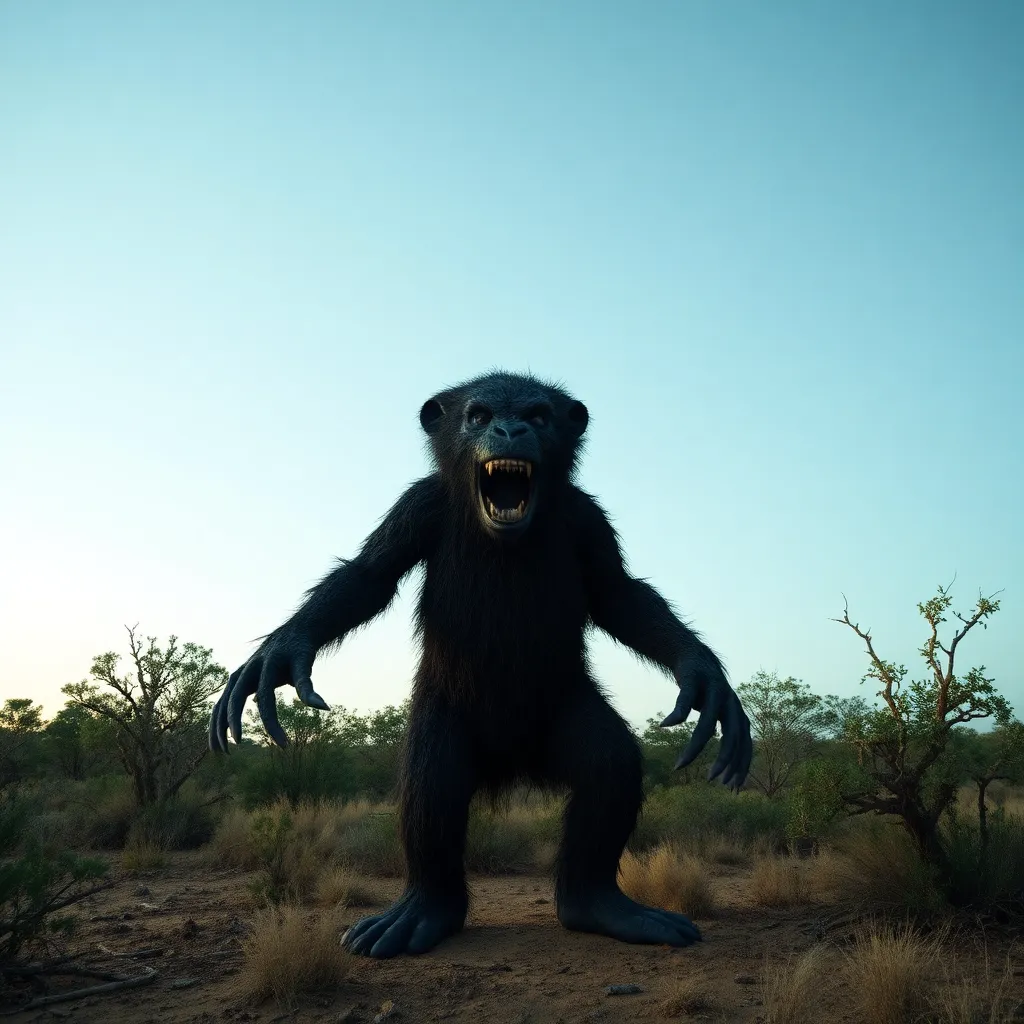The Giant of the Andes: A South American Legend of the Ucumarí
I. Introduction
The Ucumarí, often dubbed the Giant of the Andes, is a legendary creature that captivates the imagination of many in South America. This enigmatic figure is not just a part of folklore; it holds deep cultural significance, especially among the indigenous peoples of the Andean region.
The significance of the Ucumarí in Andean culture extends beyond mere storytelling. It embodies the connection between humanity and nature, serving as a symbol of the mountains’ mysteries and the traditional beliefs that surround them. The purpose of this article is to explore the rich tapestry of the Ucumarí legend, its origins, characteristics, and its role in contemporary society.
II. The Origins of the Ucumarí
The historical roots of the Ucumarí legend can be traced back to various indigenous cultures across the Andes. Different tribes have their own versions of the Ucumarí, each adding unique elements to the story.
- The legend is prevalent among the Quechua and Aymara peoples, where it is often associated with the protective spirits of the mountains.
- Cultural influences have led to variations, with some stories portraying the Ucumarí as a benevolent guardian, while others depict it as a fearsome creature.
In indigenous folklore, the Ucumarí is often mentioned in tales that explain natural phenomena or impart moral lessons. These narratives are crucial in maintaining the cultural heritage of Andean communities, emphasizing the importance of respecting nature and its spirits.
III. Description of the Ucumarí
The Ucumarí is typically described as a large, bear-like creature, standing on two legs. Its physical characteristics include:
- Height: Often depicted as towering over humans, with estimates ranging from 8 to 12 feet.
- Fur: Thick, shaggy fur, often described as dark brown or black, reminiscent of a bear.
- Eyes: Large, expressive eyes that are said to glow in the dark, adding to its mystical aura.
Behaviorally, the Ucumarí is often portrayed as elusive and shy, avoiding human contact. However, it is also believed to possess mystical qualities, such as:
- Ability to communicate with animals and nature.
- Protective instincts towards the environment and its inhabitants.
In Andean mythology, the Ucumarí symbolizes strength and resilience, representing the guardianship of nature. It serves as a reminder of the mountains’ sacredness, urging people to live harmoniously with their surroundings.
IV. The Ucumarí in Contemporary Culture
Today, the Ucumarí continues to influence various aspects of contemporary culture. Its representations can be found in:
- Art: Artists often depict the Ucumarí in paintings and sculptures, showcasing its grandeur and mystique.
- Literature: The creature features in stories and novels, serving as a symbol of cultural identity and heritage.
Moreover, the Ucumarí plays a significant role in modern Andean festivals and rituals, where it is celebrated through dances, stories, and music. These events not only honor the legend but also promote community bonding and cultural pride.
Additionally, the legend of the Ucumarí has a noticeable impact on local tourism and the economy. Tourists are drawn to the mystical allure of the creature, leading to:
- Guided tours to purported Ucumarí habitats.
- Souvenir shops selling Ucumarí-themed crafts and art.
V. Encounters and Sightings
Throughout history, there have been numerous reports of Ucumarí sightings. These accounts vary widely, often sparking intrigue and skepticism alike.
- Historical Reports: Indigenous communities have long shared stories of encounters, often describing the Ucumarí as a protector of the mountains.
- Famous Encounters: Anecdotes of sightings by tourists and researchers have emerged, some claiming to have seen the creature or heard its distinctive calls.
From a scientific perspective, many sightings have been met with skepticism. Some researchers attribute these encounters to misidentified wildlife or psychological factors, while others advocate for the exploration of these legends to better understand cultural beliefs.
VI. The Ucumarí in Conservation Efforts
The legend of the Ucumarí is intricately connected to environmental awareness and conservation efforts in the Andes. This connection is vital for several reasons:
- Promotion of respect for nature: The Ucumarí symbolizes the need to protect the environment, encouraging sustainable practices among local communities.
- Community initiatives: Various projects inspired by the Ucumarí aim to conserve Andean ecosystems, such as reforestation and wildlife protection efforts.
By invoking the Ucumarí in these initiatives, communities foster a sense of pride and responsibility towards their natural heritage, ensuring that future generations appreciate the importance of conservation.
VII. The Ucumarí’s Influence on Identity and Heritage
The Ucumarí plays a crucial role in shaping cultural identity among Andean peoples. Its significance extends to:
- Cultural Identity: The legend fosters a sense of belonging and pride among indigenous communities, linking them to their ancestors and traditions.
- Transmission of Knowledge: Stories of the Ucumarí are passed down through generations, preserving cultural narratives and values.
Furthermore, the Ucumarí serves as a symbol of resilience, embodying the struggles and triumphs of the Andean peoples throughout history. It stands as a testament to their enduring spirit and connection to the land.
VIII. Conclusion
In summary, the Ucumarí is more than just a legend; it is a vital component of Andean culture, embodying the intricate relationship between people and the natural world. As we reflect on the relevance of such legends in modern society, it becomes clear that they serve as important vehicles for cultural preservation and education.
As we continue to navigate the complexities of contemporary life, it is essential to preserve and celebrate our cultural heritage through stories like the Ucumarí. By doing so, we honor the past while inspiring future generations to appreciate and protect the world around them.



